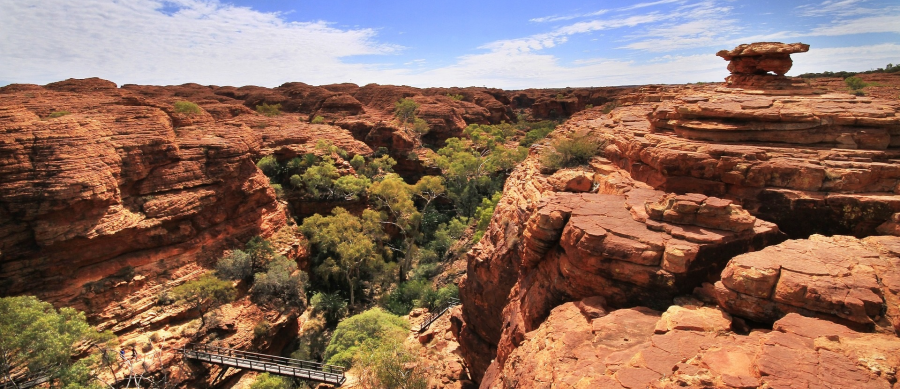Climate Change in Australia
Climate information, projections, tools and data

Northern Territory’s changing climate
The Northern Territory is already experiencing the impacts of climate change. The climate of Northern Territory is projected to continue to change into the future.
Climate change projections of Australia’s future climate are delivered at a national level through the Climate Change in Australia website. In addition, regional climate projections are also delivered by many state and territory governments. These state-based projections are provided at a higher resolution than the national projections, provide local-scale information and may better represent regional climate. While the methodologies for producing the national and state-based projections differ, the resulting information about the changing climate is broadly consistent, but with some regional differences.
Detailed climate change science information for the Northern Territory is provided through the report Climate Change in the Northern Territory – State of the science and climate change impacts .
The climate statements below are largely based on the national projections data provided through the Climate Change in Australia website, and on past observational data from the Australian Bureau of Meteorology. Projections are focused on mid-century (2040-2059) relative to 1986-2005 (unless otherwise stated), in line with baselines used by the Intergovernmental Panel on Climate Change Fifth Assessment Report (IPCC AR5). Projections are based on a high emissions scenario (RCP8.5), and averages refer to the average of projected changes across the whole Territory.
The Northern Territory is already experiencing the impacts of climate change:
- All of the Northern Territory has warmed since 1910. Average annual temperature has increased by 1.5 °C since 1910
- December-February rainfall increased over almost all of the Northern Territory, while June-August rainfall declined over most of the region.
- The number of days with dangerous weather conditions for bushfires has increased in nearly all locations.
- There is no clear trend in the number of tropical cyclones over the Northern Territory during the 1981/82 – 2017/18 period.
The climate of the Northern Territory is projected to continue to change over the coming decades. By mid- century, the following changes are projected:
- The Northern Territory will continue to get hotter into the future.
- Under a high emissions scenario (RCP8.5), the Northern Territory can expect an average annual temperature increase of around 1.5-2.5 °C (central estimate of 2.0 °C).
- Large and sustained reductions in global greenhouse gas emissions (RCP2.6) reduces the projected warming to around 0.8-1.7 °C (central estimate 1.1 °C).
- Under a high emission scenario, the number of hot days (>35 °C)1 will increase from approximately 86 to 199 days per year in Batchelor. The number of very hot days (> 40 °C) will increase from approximately 7 to 43 days per year in Katherine, and from approximately 14 to 48 days per year in Alice Springs.
- By mid-century under a high emissions scenario2:
- Darwin is projected to be more like the current climate of Jabiru;
- Katherine is projected to be more like the current climate of Wyndham (WA); and
- Alice Springs is projected to be more like the current climate of Warburton (WA).
- The Northern Territory can expect longer fire seasons, with around 40% more very high fire danger days3.
- Sea levels are projected to rise by around 24 cm along the coast of the Northern Territory4.
- Extreme rain events in the Northern Territory are projected to become more intense.
- Projected change in average annual rainfall for the Northern Territory is unclear, although significant change is possible. Both wetter and drier futures should therefore be considered, especially in the monsoon region.
- The number of tropical cyclones is projected to decrease by about 10% for this region of Australia.
Further reading and resources:
- Climate change in the Northern Territory – state of the science and climate change impacts (PDF download)
- Climate Change NT
- Earth Systems and Climate Change Hub
- Bureau of Meteorology, Climate change – trends and extremes
- State of the Climate (CSIRO & BoM)
- IPCC Fifth Assessment Report, The Physical Science Basis
----
Notes
1 Compares 2036-2065 with 1981-2010. For more information, access the Climate Change in Australia Thresholds Calculator tool.
2 Climate Change in Australia Climate Analogues tool.
3 For more information, view the Earth Systems and Climate Change Hub brochure (PDF download) .
4 Average of Northern Territory coastal council values from CoastAdapt .
------------
Page last updated 20th January 2022



